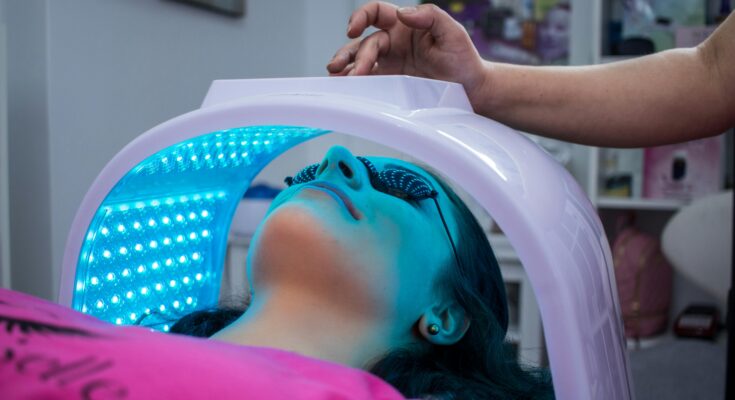The Dermatology Diagnostic Devices Global Market Report 2024 by The Business Research Company provides market overview across 60+ geographies in the seven regions – Asia-Pacific, Western Europe, Eastern Europe, North America, South America, the Middle East, and Africa, encompassing 27 major global industries. The report presents a comprehensive analysis over a ten-year historic period (2010-2021) and extends its insights into a ten-year forecast period (2023-2033).
Learn More On The Dermatology Diagnostic Devices Market:
https://www.thebusinessresearchcompany.com/report/dermatology-diagnostic-devices-global-market-report
According to The Business Research Company’s Dermatology Diagnostic Devices Global Market Report 2024, The dermatology diagnostic devices market size has grown rapidly in recent years. It will grow from $16.12 billion in 2023 to $18.28 billion in 2024 at a compound annual growth rate (CAGR) of 13.4%. The growth in the historic period can be attributed to increased skin disorders and conditions, rise in awareness of skin cancer, advancements in dermatological research, expansion of aesthetic dermatology, shift towards preventive dermatology..
The dermatology diagnostic devices market size is expected to see rapidly grown in the next few years. It will grow to $28.77 billion in 2028 at a compound annual growth rate (CAGR) of 12.0%. The growth in the forecast period can be attributed to rising geriatric population, global increase in dermatological disorders, telemedicine and remote dermatology services, personalized dermatology treatment approaches, awareness campaigns and skin health education.. Major trends in the forecast period include multipurpose diagnostic platforms, personalized medicine approaches, integration with electronic health records (ehrs), telemonitoring for chronic skin conditions, enhanced connectivity and data security..
The surging prevalence of skin cancer is expected to propel the growth of the dermatology diagnostic devices market going forward. Skin cancer refers to the abnormal growth of skin cells, typically caused by ultraviolet (UV) radiation, with types including basal cell carcinoma, squamous cell carcinoma, and melanoma, which require prompt diagnosis and treatment to prevent potential spread. Dermatology diagnostic devices enable dermatologists to diagnose skin cancer more effectively, leading to increased adoption and investment in the field. For instance, in April 2022, according to the American Academy of Dermatology Association, a US-based non-profit medical specialty association, an estimated 197,000 new cases of melanoma (a type of skin cancer), 97,920 non-invasive (in situ), and 99,780 invasive, would be diagnosed. Further, approximately 9,500 people in the U.S. are diagnosed with skin cancer daily. Therefore, the surging prevalence of skin cancer drives the dermatology diagnostic device market.
Get A Free Sample Of The Report (Includes Graphs And Tables):
https://www.thebusinessresearchcompany.com/sample.aspx?id=13088&type=smp
The dermatology diagnostic devices market covered in this report is segmented –
1) By Type: Dermatoscopes, Imaging Equipment, Microscopes And Trichoscopes, Biopsy Devices, Other Types
2) By Application: Dermatitis, Psoriasis, Skin Cancer, Lesion, Cellulitis, Other Applications
3) By End-Users: Dermatology Centers, Hospitals, Other End-Users
Major companies operating in the dermatology diagnostic devices market are focused on developing advanced technology, such as Whole-body 3D imaging technology for skincare devices, to drive revenues in the market. Whole-body 3D imaging technology is a medical imaging technique used for capturing detailed three-dimensional images of the entire human body that is often employed in various medical fields for purposes such as diagnosis, treatment planning, and monitoring of medical conditions. For instance, in June 2023, Hoag Hospital, a US-based non-profit hospital, launched VECTRA WB360, the world’s first whole-body 3D photographic imaging system, an innovative technology that would revolutionize early detection and prevention of skin cancer. The VECTRA WB360 is a walk-through machine with 92 cameras that flash simultaneously to capture a patient’s full skin surface in less than one second. The device, powered by powerful imaging software that employs artificial intelligence, builds a 3D avatar of a patient’s complete body and maps out all moles and lesions with high-resolution fidelity.
The dermatology diagnostic devices market report table of contents includes:
1. Executive Summary
2.Dermatology Diagnostic Devices Market Characteristics
3.Dermatology Diagnostic Devices Market Trends And Strategies
4.Dermatology Diagnostic Devices Market analysis
5.Dermatology Diagnostic Devices Market Size And Growth
6.Dermatology Diagnostic Devices Segmentation
7.Dermatology Diagnostic Devices Regional And Country Analysis
.
.
.
27. Dermatology Diagnostic Devices Competitive Landscape And Company Profiles
28.Dermatology Diagnostic Devices Key Mergers And Acquisitions
29.Dermatology Diagnostic Devices Future Outlook and Potential Analysis
TOP MAJOR PLAYERS:
- Siemens Healthcare Private Limited
- Koninklijke Philips N.V.
- GE Healthcare Technologies Inc.
- Valeant Pharmaceuticals International Inc (Bausch Health)
Contact Us:
The Business Research Company
Europe: +44 207 1930 708
Asia: +91 88972 63534
Americas: +1 315 623 0293
Email: [email protected]
Follow Us On:
LinkedIn: https://in.linkedin.com/company/the-business-research-company
Twitter: https://twitter.com/tbrc_info
Facebook: https://www.facebook.com/TheBusinessResearchCompany
YouTube: https://www.youtube.com/channel/UC24_fI0rV8cR5DxlCpgmyFQ
Blog: https://blog.tbrc.info/
Healthcare Blog: https://healthcareresearchreports.com/
Global Market Model: https://www.thebusinessresearchcompany.com/global-market-model




